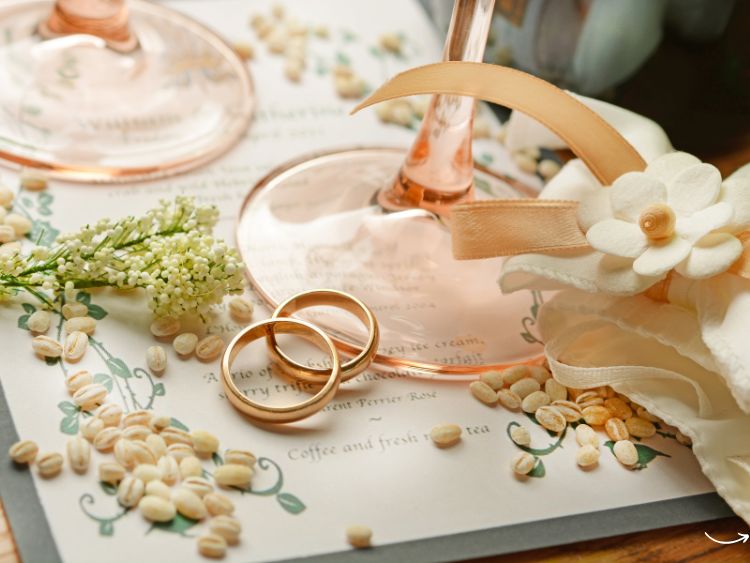Planning a wedding involves countless details, and one of the most crucial elements is the wedding menu layout. Not only does it set the tone for the dining experience, but it also reflects the couple’s taste and style. With a well-thought-out menu, you can make a lasting impression on your guests, ensuring they remember your special day fondly. So, let’s dive into the world of wedding menu layouts and discover how to create a memorable culinary experience for your big day.
Understanding the Importance of a Wedding Menu Layout
Your wedding menu layout isn’t just a list of dishes; it’s a representation of your theme, your story, and your personality. A beautifully designed menu can enhance the overall ambiance of your wedding, making it an integral part of the decor. But beyond aesthetics, a well-organized menu ensures that your guests know what to expect and can enjoy the meal without any confusion.
Choosing Your Wedding Menu Style
Buffet Style
Buffet style is a popular choice for its versatility and casual vibe. It allows guests to choose what they want and how much they want, catering to various tastes and dietary needs. This style encourages mingling and gives a relaxed feel to your wedding reception.
Plated Dinners
A plated dinner offers a more formal and elegant dining experience. Each guest is served individually, usually with a set number of courses. This style allows for a more controlled portion size and presentation, adding a touch of sophistication to your event.
Family Style
Family-style service is a blend of the previous two styles. Large platters of food are placed on each table, and guests serve themselves. It promotes a sense of community and interaction, making your wedding feel more intimate and cozy.
Designing the Perfect Wedding Menu Layout
Visual Appeal
The first thing your guests will notice is the design of your menu. Choose a layout that complements your wedding theme and color scheme. Elegant fonts, subtle graphics, and high-quality paper can make a significant difference. Here are some tips to enhance visual appeal:
- Use elegant fonts that are easy to read.
- Incorporate your wedding colors subtly.
- Choose high-quality, textured paper.
Clear Structure
A clear structure helps guests navigate through the menu effortlessly. Divide your menu into sections such as appetizers, main courses, desserts, and beverages. This structure makes it easy for guests to find their preferences and plan their meal.
Descriptive Language
Use descriptive language to entice your guests and give them a preview of the flavors they will experience. Instead of just listing “chicken,” describe it as “Herb-Roasted Chicken with Lemon Thyme Jus.” This not only sounds more appealing but also enhances the dining experience.
Incorporating Dietary Needs
Vegetarian and Vegan Options
Ensure your menu includes vegetarian and vegan options. With a growing number of guests opting for plant-based diets, it’s crucial to cater to their needs without compromising on taste or variety.
Gluten-Free and Allergen-Friendly Choices
Identify common allergens and provide alternatives. Clearly label gluten-free options and be mindful of other allergens like nuts, dairy, and shellfish. Consider consulting with your caterer to ensure all dietary needs are met.
Sample Wedding Menu Layouts
Classic Elegance
- Appetizers
- Smoked Salmon Canapés with Dill Cream
- Mini Caprese Skewers
- Main Course
- Beef Tenderloin with Red Wine Reduction
- Herb-Crusted Salmon with Lemon Butter Sauce
- Wild Mushroom Risotto (Vegan)
- Desserts
- Vanilla Bean Panna Cotta with Berry Compote
- Flourless Chocolate Cake (Gluten-Free)
- Beverages
- Signature Cocktails
- Premium Wine Selection
Rustic Charm
- Appetizers
- Bruschetta with Tomato Basil
- Bacon-Wrapped Dates
- Main Course
- Grilled Chicken with Rosemary Garlic Sauce
- Slow-Roasted Pork with Apple Chutney
- Grilled Vegetable Platter (Vegan)
- Desserts
- Apple Pie with Vanilla Ice Cream
- Rustic Berry Tart
- Beverages
- Craft Beer Selection
- Local Wine Varieties
FAQs About Wedding Menu Layout
How do I choose the right wedding menu style?
Consider your wedding theme, guest preferences, and budget. Buffet styles are great for a relaxed atmosphere, plated dinners offer elegance, and family-style service promotes intimacy.
How many courses should my wedding menu have?
Typically, a wedding menu includes three to five courses: appetizers, a main course, and dessert. You can add additional courses like soup, salad, or intermezzo (a palate cleanser) for a more elaborate experience.
What should I consider for guests with dietary restrictions?
Communicate with your caterer about dietary restrictions and ensure there are options for vegetarians, vegans, and those with allergies. Clearly label these options on your menu.
Can I customize the wedding menu layout?
Absolutely! Your menu should reflect your style and preferences. Work with your designer or caterer to create a layout that matches your wedding theme and is easy for guests to read.
Conclusion
Creating the perfect wedding menu layout involves more than just selecting delicious dishes. It’s about crafting an experience that complements your wedding theme, caters to all your guests, and adds to the overall ambiance of your special day. By considering visual appeal, clear structure, and dietary needs, you can design a menu that not only looks good but also delights your guests. Remember, your wedding menu is a reflection of your taste and style, so make it count!
